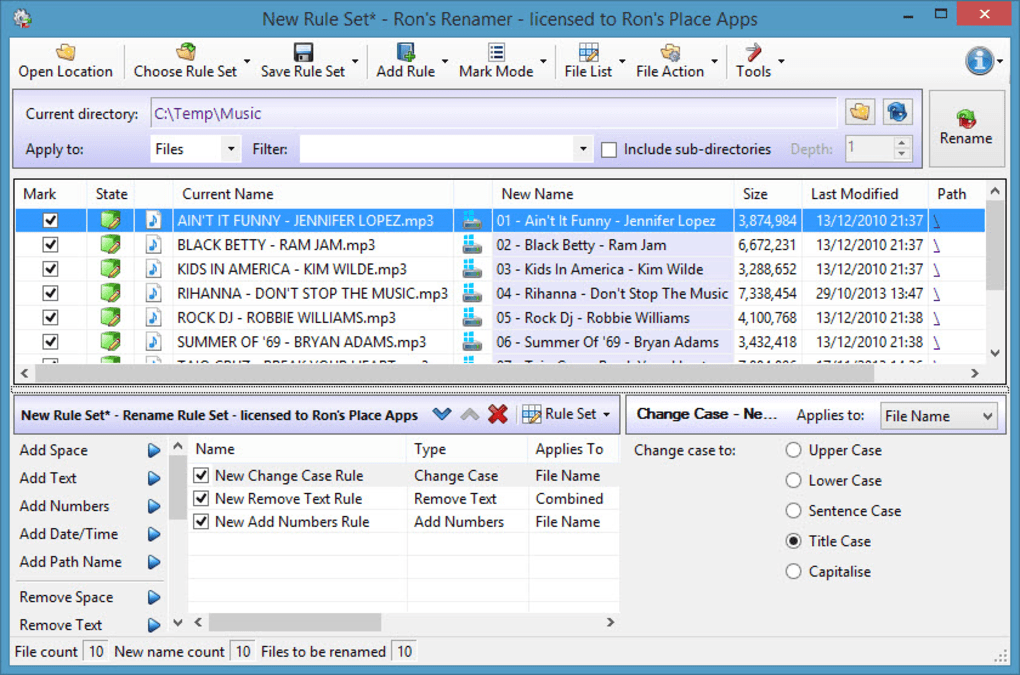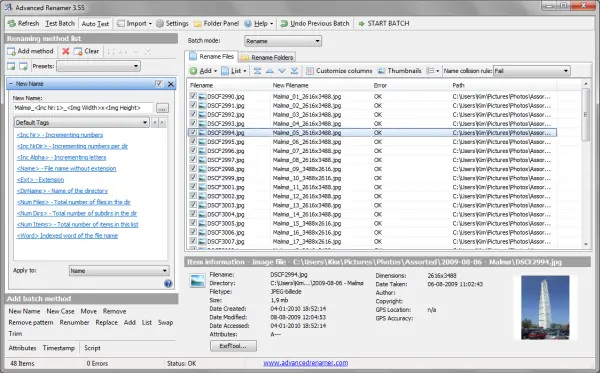

Top 9 Best Free File Rename Software for Mac in 2023 1. Renamer 6 Long story short, a macOS renamer can help you rename thousands of files (using rules and filters) within seconds and optimize them conveniently. Of course, some of them also allow you to rename files using ID3 tags (audio files) and Metadata (pictures). You can utilize these tools to remove the pattern, renumber, replace, add, list, trim, new name, case, attributes, and timestamp to a given batch of files and folders. What is File Rename Software for Mac?Ī file rename software is a tool designed to help you batch-rename files and folders according to specific rules you can set. But first, let’s comprehend what file rename software is for Mac. So you can discover the best one for you. Understanding the need of every user differs, we have listed diverse types of Mac file rename apps.

In this guide, you will find out the nine best free file renamer Mac OS. Of course, this guide is about file renaming software for Mac. If you need a powerful way to rename multiple files at once and you’re just not up for mastering the Command Prompt or PowerShell commands, you can always turn to a third-party utility.Managing and organizing your videos, documents, images, contacts, and more is extremely troublesome and time-consuming, especially if you have a large amount of files and folders stored on your Mac. Rename Multiple Files Using a Third Party App You can learn more about PowerShell in general from our Geek School guide, and learn more about the rename-item commandlet from Microsoft’s TechNet Library.

And, of course, you can also build more complicated commandlet structures that even include IF/THEN logic. For example, the rename-item commandlet also offers features like a -recurse switch that can apply the commandlet to files in a folder and all folders nested inside that folder, a -force switch that can force renaming for files that are locked or otherwise unavailable, and even a -whatif switch that describes what would happen if the commandlet was executed (without actually executing it).
#Mac batch file rename free how to
RELATED: Geek School: Learn How to Automate Windows with PowerShellĪs you might expect, PowerShell offers tremendous power when it comes to naming your files and we’re only scratching the surface here. The rest of the commandlet just signifies that any space ( " " ) should be replaced by an underscore ( "_" ). The -replace switch indicates that a replacement is going to happen. The $_.name part stands in for each of the files getting piped. The dir part of that commandlet lists all the files in the folder and pipes them (that’s the | symbol) to the rename-item commandlet. From the “File” menu, point to “Open Windows PowerShell,” and then select “Open Windows Powershell.”ĭir | rename-item -NewName The quickest way to open a PowerShell window at your desired location is to first open the folder in File Explorer. Pipe the output of Dir to Rename-Item and you’re in business. Using PowerShell, you can pipe the output of one command-known as a “commandlet” in PowerShell terms-to another command, just like you can on Linux and other UNIX-like systems. The two important commands you’ll need are Dir, which lists the files in the current directory, and Rename-Item, which renames an item (a file, in this case). PowerShell offers even more flexibility for renaming files in a command-line environment. If you’re interested, the folks over at the Lagmonster forums have an excellent writeup on the subject. RELATED: How to Write a Batch Script on WindowsĪnd this only begins to address the kinds of command line wizardy you can get into if you want to build more complicated commands-or even batch scripts-by weaving other commands and conditionals into things. html extension to use the same file name and same first three letters only of the file extension, which ends up cutting the “l” off of all the extensions in the folder. This tells Windows to rename all files with the.


 0 kommentar(er)
0 kommentar(er)
